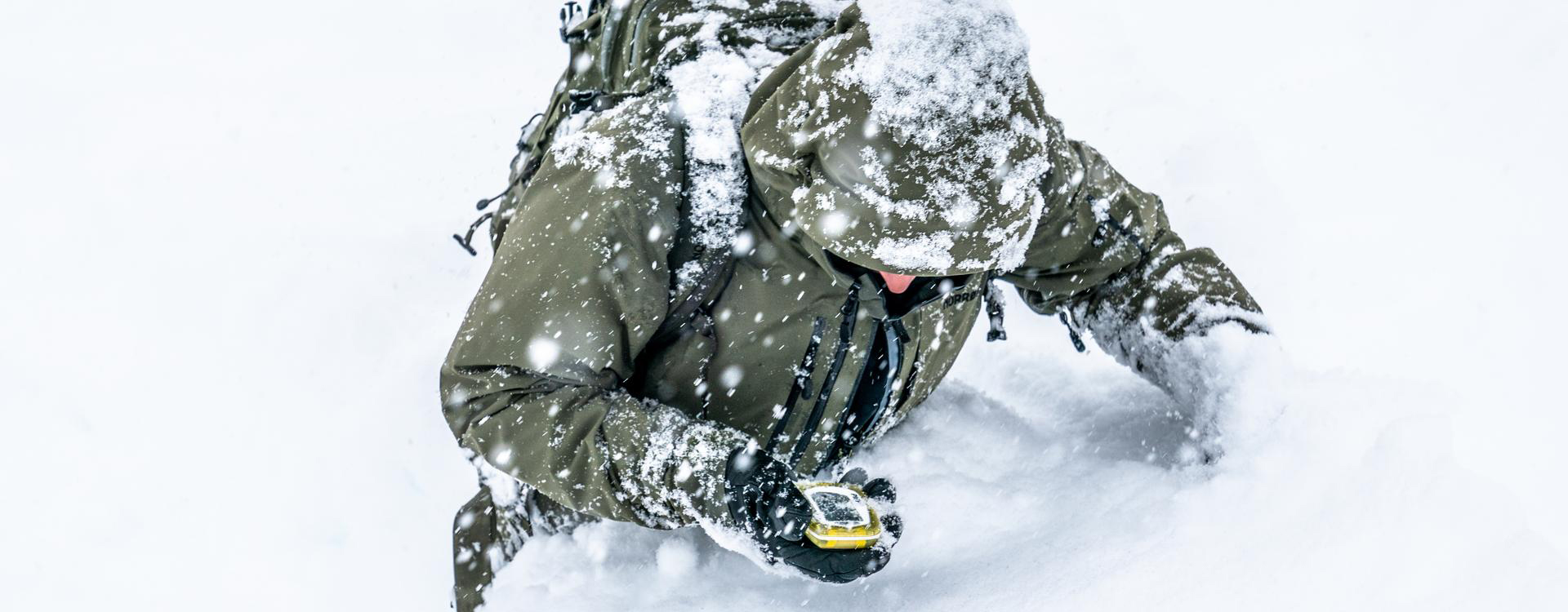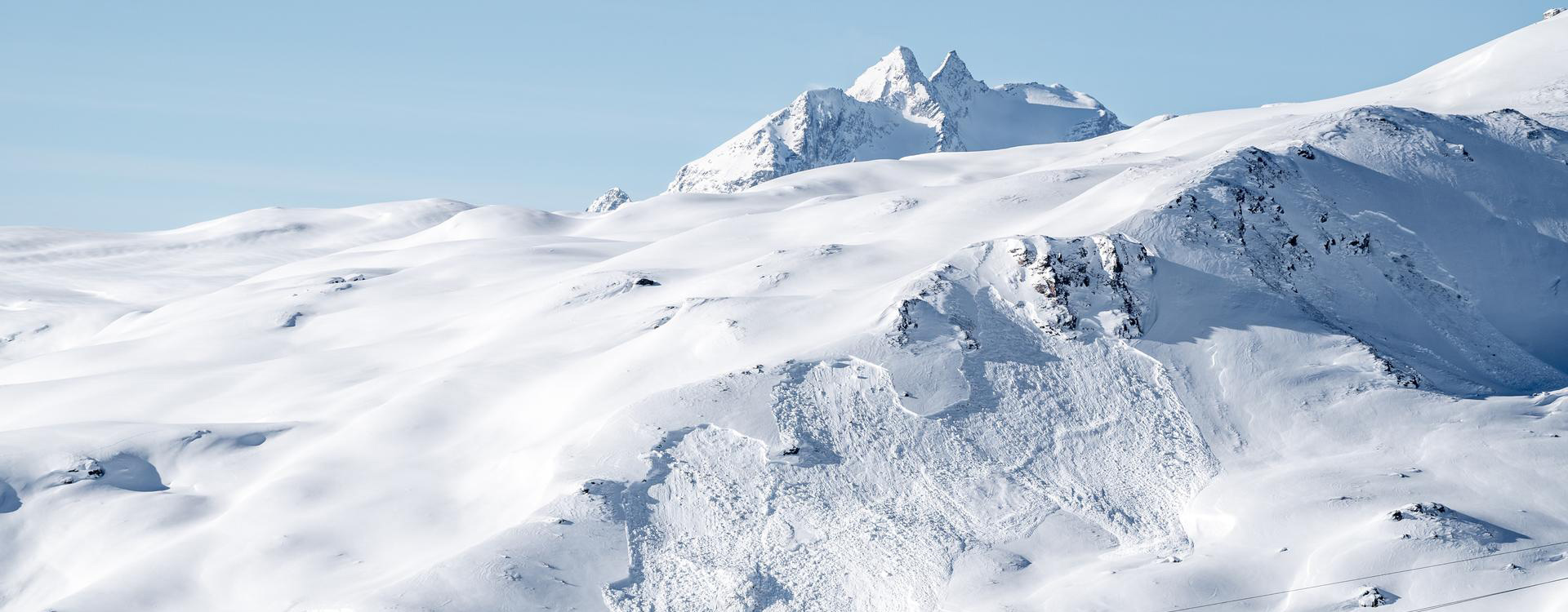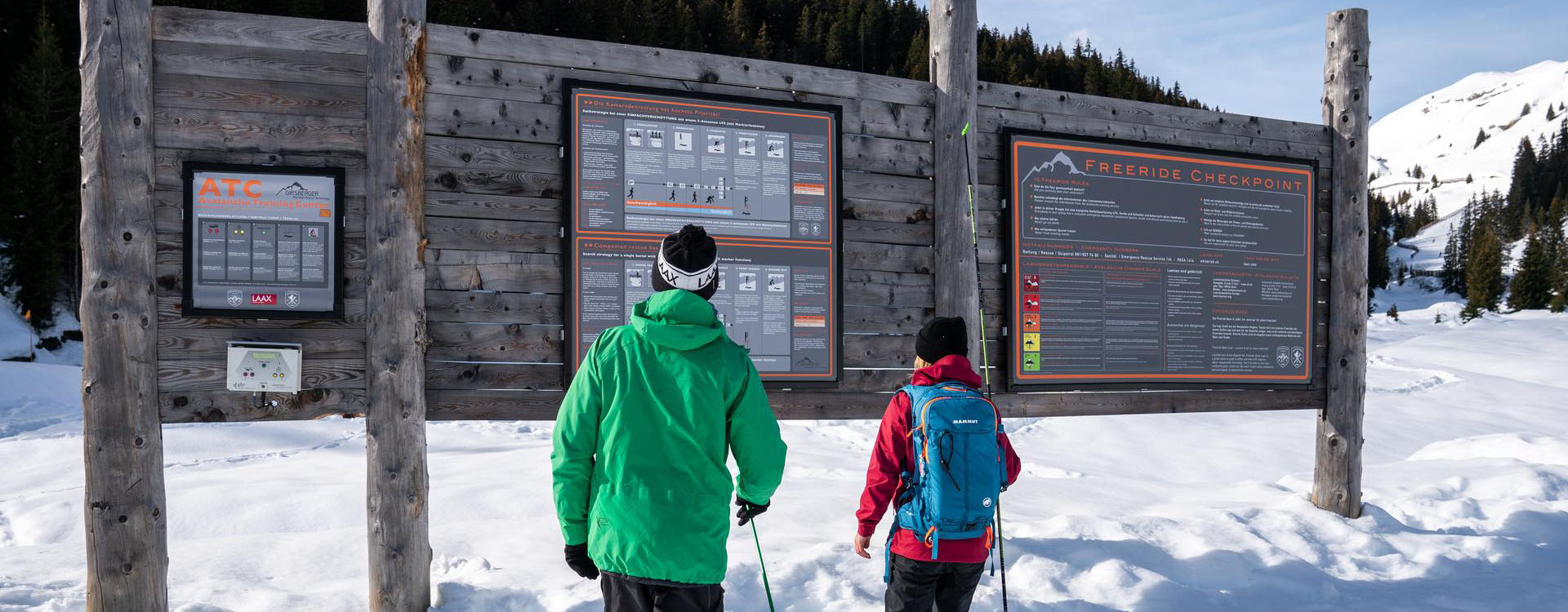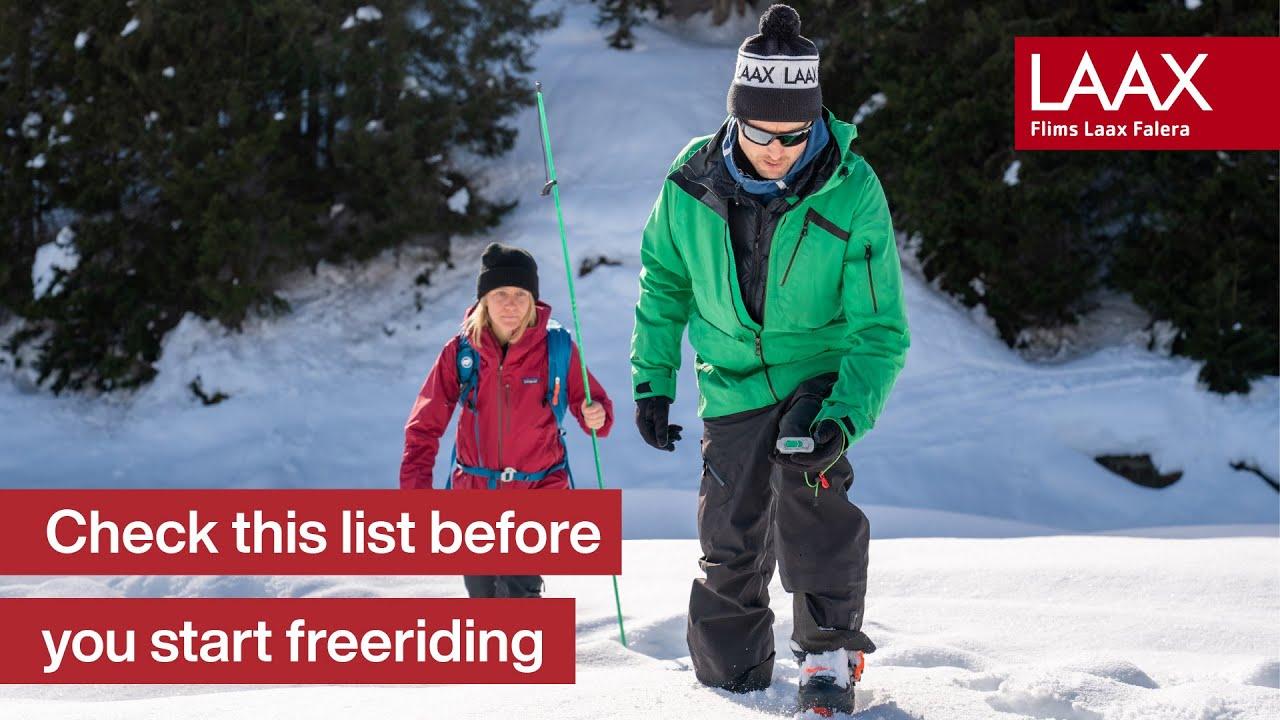Freeride equipment, route planning and training
How to LAAX: Preparing for your next freeride adventure
More and more winter sports enthusiasts are seeking the feeling of freedom beyond the marked pistes. But the alpine dangers are omnipresent when freeriding in unsecured terrain and not all areas are monitored. But how do you prepare properly and what equipment do you need for your next tour? Sina Candrian, LAAX Local & Team Rider, tells you.
Equipment
Equipment is essential for freeriding. In an emergency, it can make the difference between life and death for yourself and your friends. This is what you need for your avalanche equipment:
Avalanche transceiver - this device emits a signal in the event of burial, which can be located with the avalanche transceiver of an unburied person. It is crucial how quickly a buried person can be found, as within minutes of being buried, the chances of survival decrease significantly. It is important that you test your avalanche transceiver before every freeride tour, for example at a freeride checkpoint in LAAX.
Shovel and probing rod - as soon as the buried person has been located with the avalanche transceiver, the rescue operation begins with the help of the probing rod and the shovel.
Mobile phone - it is important to have a phone with you so that you can alert the rescue services in an emergency. It is best to find out in advance who is the contact point for emergencies in the immediate vicinity. In LAAX you will find the SOS button in the INSIDE LAAX App or you can call +41 81 927 74 00. In case of doubt or if you have no reception, you can also call the national emergency number 144 or the Swiss Air Rescue 1414 anytime.
Avalanche airbag backpack - For those who regularly ski off-piste, it is worth buying a backpack with an avalanche airbag. If the airbag is triggered at the right time during an avalanche, it provides buoyancy and possibly keeps you on the surface, which in turn increases your chances of survival. However, it certainly does not provide complete safety. Even with an avalanche airbag, precautionary rules for behaviour in unsecured terrain must be observed.
For first aid, you should take a first aid kit and an insulating blanket with you on every freeride tour. Also wear the usual safety equipment: a helmet protects you in the event of a fall and the right clothing can keep you warm and dry. In addition, you should always have enough provisions and something to drink (energy) with you.
Important: The equipment alone is not enough - even more important is a professional avalanche course to train the use of the equipment.
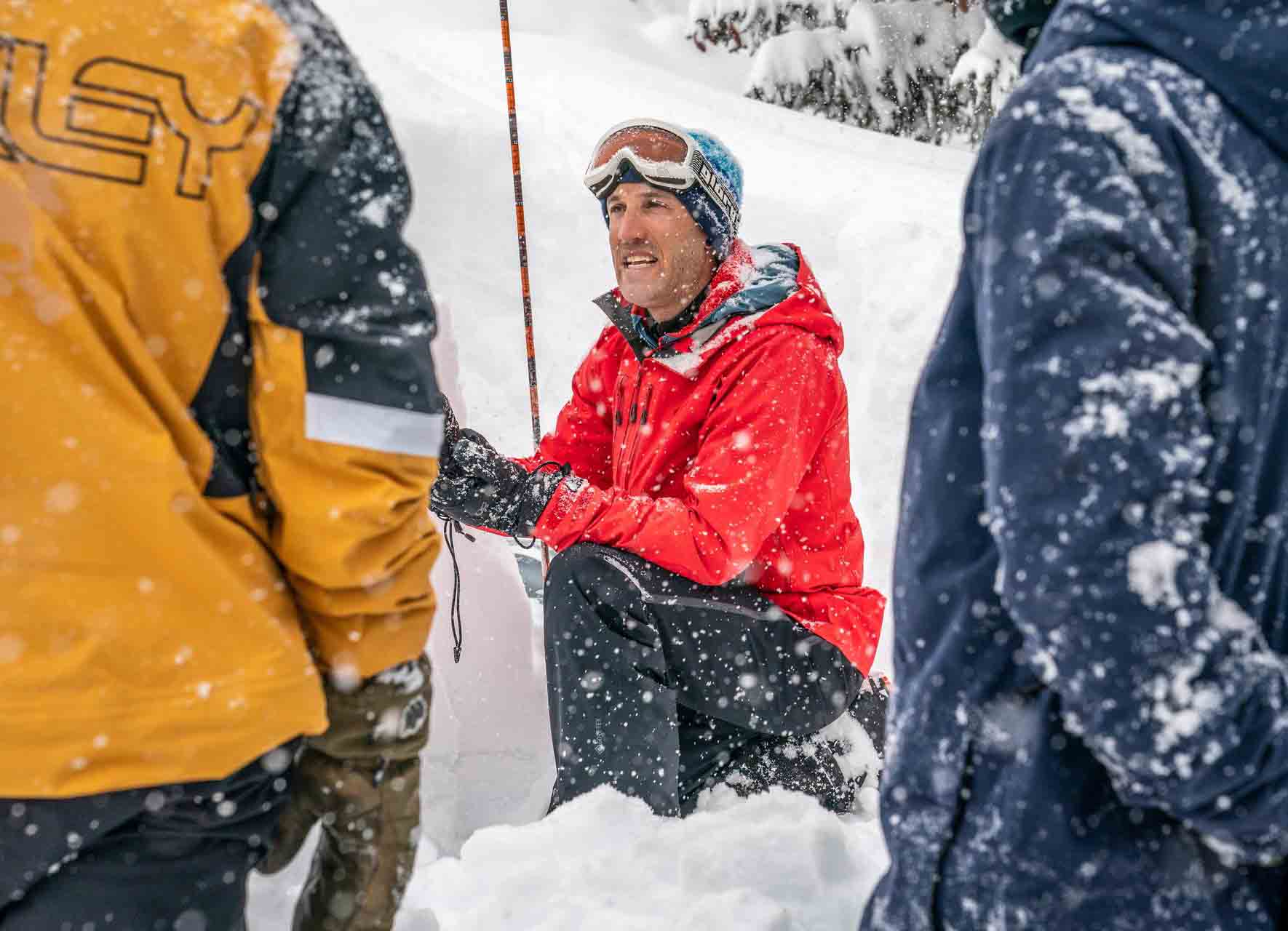
Professional Avalanche Course
An avalanche course prepares you optimally for planning and carrying out a freeride tour. Professionals show you what equipment you need and how to use it correctly. You learn about danger patterns and the correct behaviour in an avalanche accident. Individual slope assessment, avalanche danger assessment and tour planning are looked at in detail. It is also advisable to attend regular refresher courses as well as to train independently. It is best to take the avalanche course with your friends who will be accompanying you when you go freeriding. This way you will become a well-coordinated team.
|
Provider |
Town |
|---|---|
|
Flims |
|
|
Avers |
|
|
Laax |
|
|
Flims |
|
Provider |
Town |
|---|---|
|
Avers |
|
|
Flims |
|
|
Flims |
|
|
Flaach |
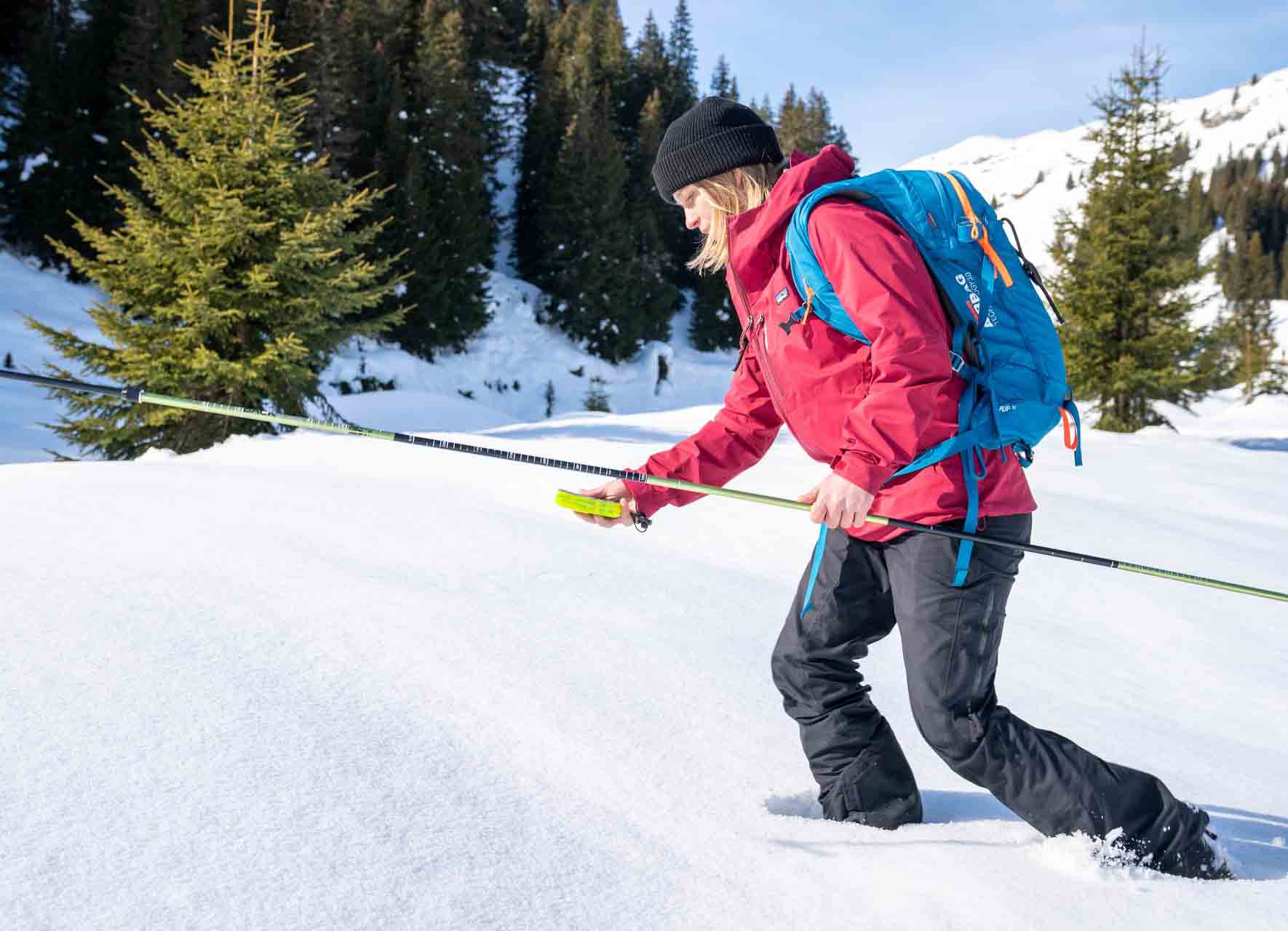
Regular training
After you have completed a professional avalanche course, you should regularly refresh what you have learned. In Plaun you will find the Avalanche Training Center ATC. The stationary facility simulates an avalanche burial and offers you the opportunity to regularly test your equipment and deal with the serious situation before it arrives. Here, too, it makes sense to do this right away with your freeride friends.
Planning your route
The right equipment and regular training in searching for buried subjects will prepare you for an emergency. However, careful planning of your next freeride adventure is just as important to avoid getting into a serious situation in the first place. Preparation includes the following points:
| 1. | Prepare at home and inform yourself about the avalanche danger, slope inclination, sunlight and weather conditions. A helpful platform is "White Risk" from SLF. White Risk detailed planning is also necessary when freeriding in the forest. When planning, please also take into account the wildlife rest zones. |
| 2. | Test your avalanche transceiver, for example at a freeride checkpoint in LAAX. |
| 3. | Find out about the current weather and avalanche situation in LAAX at the Freeride Base. |
| 4. | If you are standing in front of your desired slope, you have to assess it again on site. Think about your line, read the terrain and consider your escape route should an avalanche occur. |
| 5. | Listen to your instincts: If you're not sure or don't feel comfortable, skip the tour and do it on another occasion. |

